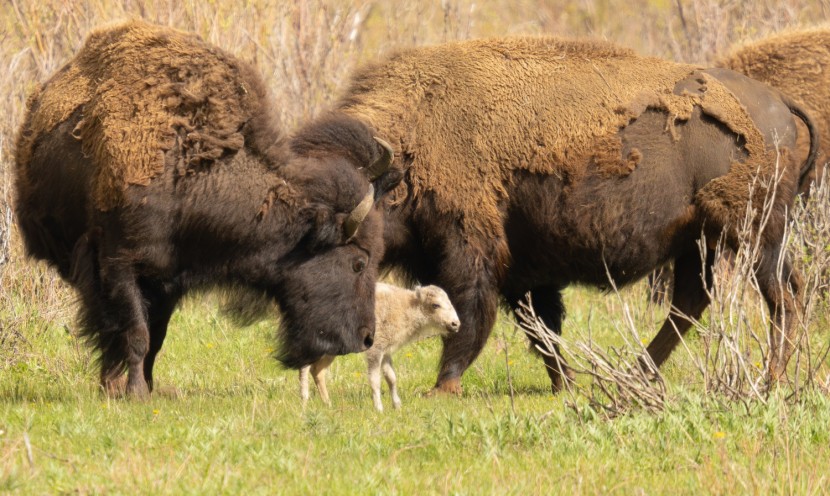
A rare white bison that's sacred to Native Americans was born in Yellowstone National Park for the first time earlier this month — but hasn't been seen since.
The National Park Service on Friday confirmed the extraordinary June 4 arrival of the calf, citing "multiple creditable sightings" and photos shot by park visitors, professional wildlife watchers and others.
But there haven't been any confirmed sightings since then, and park workers have been unable to locate the baby bison, the NPS said in a news release.
About one in five bison calves are killed by "natural hazards" each spring in Yellowstone, the NPS said, but a spokesperson declined to say whether officials thought that happened to the white bison, according to the Associated Press.
Mike Mease, a co-founder of the Buffalo Field Campaign conservation ground, told AP he thought the calf was alive somewhere in the park, away from the roads and walkways favored by visitors.
The birth of a white bison fulfilled a Lakota prophecy of better times ahead and it was named Walak Gli, which means "Return Sacred" in Lakota, during a ceremony earlier in the week.
Photos of the baby bison showed it with black eyes and some pigmentation on its fur, meaning it's not an albino, according to the NPS.
The odds of a white bison being born in the wild are at least 1 in a million and it's never previously been recorded in Yellowstone, the NPS said.
Officials credited the birth to the "successful recovery of a wild bison population of 3,000-6,000 animals."
Yellowstone covers 2.2 million acres in northwest Wyoming and small parts of Idaho and Montana.
It's the world's first national park and the only place where bison, sometimes called buffalo, have lived continuously in the U.S. since prehistoric times, according to the NPS.
Although the animals' population once numbered in the tens of millions, they were hunted to near exinction in the late 1800s and only about two dozen remained in Yellowstone in 1902, when officials launched a program to revive the species.
The effort to bring back North America's largest land-dwelling mammals is "one of the great triumphs of American conservation," according to the NPS.








